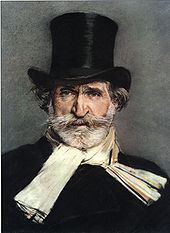Is Opera Really “Dead”?
WELL, of course it’s not, but another story has gone up recently arguing that the entire art form is finished. The focus of the piece is that the opera repertoire has been stuck in the 19th century for way too long — that it doesn’t move forward, with new work, anymore. That would indeed be damning, but looking closer, we see that this post only considers the Metropolitan Opera — the most famous American company but hardly a comprehensive indicator of the genre’s health. Especially when it comes to contemporary opera.
Here’s a bit from the piece, on the Washington Post’s Wonkblog:
Opera is officially dead. Or maybe not completely dead, but at best ekeing out a zombie-like existence in a state of undeath. As proof, I submit this fascinating chart of Metropolitan Opera performances, which shows that for decades the Met has rarely performed any operas composed in the preceding 50 years.
… Back at the beginning of the 20th century, anywhere from 60 to 80 percent of Met performances were of operas composed in some time in the 50 years prior. But since 1980, the share of contemporary performances has surpassed 10 percent only once.
Opera, as a genre, is essentially frozen in amber – [composer Suby] Raman found that the median year of composition of pieces performed at the Met has always been right around 1870. In other words, the Met is essentially performing the exact same pieces now that it was 100 years ago.

Verdi
Opera companies, then, clearly deserve the trouble they’ve had. Got it?
I probably don’t have to tell readers of ArtsJournal that this argument is a bit simplified, as data-driven arguments about the arts and culture often are. Opera may not be as healthy as it was in the mid-19th century, but the amount of new work, especially from indie companies, is impressive.
So is almost all the opera being performed right now stuck in the 1800s? I’m probably not a typical opera-goer, but will point out: About a week ago I saw a very fine double bill at a mainstream company (Los Angeles Opera) that included one 17th century opera (Dido and Aeneas) and a 20th century opera (Bluebeard’s Castle.) The highlight of last season for me was Einstein on the Beach — a 1970s opera as radical in its way as anything by the Sex Pistols — and the new opera Invisible Cities, by the small LA company The Industry. I see a lot of rock music, jazz, visual art, etc and can vouch that Invisible Cities, staged at Union Station, was as imaginative and truly wild as any performance I’ve seen in ages. That’s a dead art form? Huh?
And does all the fighting over John Adams’s Death of Klinhoffer at its recent Met performance sound like it comes from an expired art form? What about companies in Santa Fe, San Francisco, Houston and Cooperstown that typically put on new work?
In Europe, especially the German-speaking world, there is considerably more opera being put on than in the States — including much contemporary and adventurous work, including new productions, being put on.
This gripe aside, the chart and data are valuable. And I don’t want to defensively dismiss this scribe’s implied challenge. So who thinks opera companies need to program more contemporary works and more new productions? And if so, how do we get there?
[This post edited slightly in response to comments about German opera.]
Scott Timberg's Blog
- Scott Timberg's profile
- 7 followers



